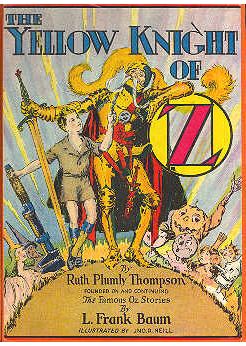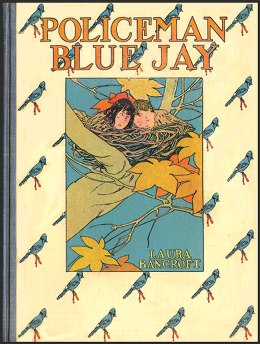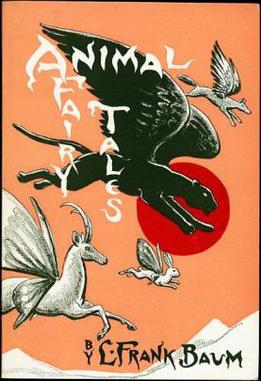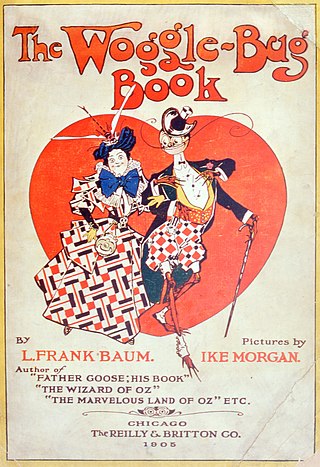Related Research Articles

The Wonderful Wizard of Oz is a 1900 children's novel written by author L. Frank Baum and illustrated by W. W. Denslow. It is the first novel in the Oz series of books. A Kansas farm girl named Dorothy ends up in the magical Land of Oz after she and her pet dog Toto are swept away from their home by a cyclone. Upon her arrival in the magical world of Oz, she learns she cannot return home until she has destroyed the Wicked Witch of the West.

The Land of Oz is a fantasy world introduced in the 1900 children's novel The Wonderful Wizard of Oz written by L. Frank Baum and illustrated by W. W. Denslow.

The Nome King is a fictional character created by American author L. Frank Baum, introduced in the 1907 book Ozma of Oz. The Nome King recurs in many of the Oz novels, being the most frequent antagonist in Baum's book series.

The Yellow Knight of Oz (1930) is the twenty-fourth book in the Oz series created by L. Frank Baum and his successors, and the tenth written by Ruth Plumly Thompson. It was illustrated by John R. Neill. The novel was followed by Pirates in Oz (1931).

The Hidden Valley of Oz (1951) is the thirty-ninth book in the Oz series created by L. Frank Baum and his successors. It was written by Rachel R.C. Payes and illustrated by Dirk Gringhuis. The book was followed twelve years later by Merry Go Round in Oz (1963).

The Magical Mimics in Oz (1946) is the thirty-seventh book in the Oz series created by L. Frank Baum and his successors, and the first written by Jack Snow. It was illustrated by Frank G. Kramer. The novel was followed by The Shaggy Man of Oz (1949). The novel entered the public domain in the United States, when its copyright was not renewed as required.
Michael Patrick Hearn is an American literary scholar as well as a man of letters specializing in children's literature and its illustration. His works include The Annotated Wizard of Oz (1973/2000), The Annotated Christmas Carol (1977/2003), and The Annotated Huckleberry Finn (2001). He considers the three most quintessential American novels to be Moby-Dick by Herman Melville, The Wonderful Wizard of Oz by L. Frank Baum, and The Adventures of Huckleberry Finn by Mark Twain.
The International Wizard of Oz Club, Inc., was founded during 1957 by Justin G. Schiller, a then thirteen-year-old boy. The sixteen charter members were garnered from the mailing list found among the papers of the recently deceased Jack Snow, with whom Schiller and the others had discussed the work of L. Frank Baum.
The Baum Bugle: A Journal of Oz is the official journal of The International Wizard of Oz Club. The journal was founded in 1957, with its first issue released in June of that year. It publishes three times per year, with issues dated Spring, Autumn, and Winter; Issue No. 1 of Volume 50 appeared in the Spring of 2006. The journal publishes both scholarly and popular articles on L. Frank Baum, the Oz books written by Baum and other writers, and related subjects, plus reviews of Oz-related films and theater productions, rare photographs and illustrations, and similar materials.

American Fairy Tales is the title of a collection of twelve fantasy stories by L. Frank Baum, published in 1901 by the George M. Hill Company, the firm that issued The Wonderful Wizard of Oz the previous year. The cover, title page, and page borders were designed by Ralph Fletcher Seymour; each story was furnished with two full-page black-and-white illustrations, by either Harry Kennedy, Ike Morgan, or Norman P. Hall.

The Enchanted Island of Yew: Whereon Prince Marvel Encountered the High Ki of Twi and Other Surprising People is a children's fantasy novel written by L. Frank Baum, illustrated by Fanny Y. Cory, and published by the Bobbs-Merrill Company in 1903.
The Oz Film Manufacturing Company was an independent film studio from 1914 to 1915. It was founded by L. Frank Baum (president), Louis F. Gottschalk, Harry Marston Haldeman (secretary), and Clarence R. Rundel (treasurer) as an offshoot of Haldeman's social group, The Uplifters, which met at the Los Angeles Athletic Club. Its goal was to produce quality family-oriented entertainment in a time when children were primarily seeing violent Westerns. It was a critical but not a commercial success; even under a name change to Dramatic Feature Films, it was quickly forced to fold. The studio made only five features and five short films, of which four features and no shorts survive. Founded in 1914, it was absorbed by Metro Pictures, which evolved into Metro-Goldwyn-Mayer.

Policeman Bluejay or Babes in Birdland is a children's novel written by L. Frank Baum and illustrated by Maginel Wright Enright. First published in 1907, Jack Snow considered it one of the best of Baum's works.

L. Frank Baum's Juvenile Speaker: Readings and Recitations in Prose and Verse, Humorous and Otherwise is an anthology of literary works by L. Frank Baum, author of the Oz books. The book was first published in 1910, with illustrations by veteran Baum artists John R. Neill and Maginel Wright Enright; a subsequent 1912 edition was retitled Baum's Own Book for Children. The book constitutes a complex element in the Baum bibliography.

Animal Fairy Tales is a collection of short stories written by L. Frank Baum, the creator of the Land of Oz series of children's books. The stories first received magazine publication in 1905. For several decades in the twentieth century, the collection was a "lost" book by Baum; it resurfaced when the International Wizard of Oz Club published the stories in one volume in 1969.
"A Kidnapped Santa Claus" is a Christmas-themed short story by American writer L. Frank Baum; it has been called "one of Baum's most beautiful stories" and constitutes an influential contribution to the mythology of Christmas.
"The Runaway Shadows, or A Trick of Jack Frost" is a twentieth-century fairy tale, a fantasy short story written by L. Frank Baum, famous as the creator of the Land of Oz. The story is one of a small cluster of Baum narratives that involve his fantasy land the Forest of Burzee and its exotic denizens. Arguably, Burzee constitutes Baum's second most important fantasy realm after Oz itself, being employed in his novels The Life and Adventures of Santa Claus (1902) and Queen Zixi of Ix (1905) and several of his short stories, and is referenced in The Road to Oz (1909).

The Woggle-Bug Book is a 1905 children's book written by L. Frank Baum, creator of the Land of Oz, and illustrated by Ike Morgan. A spinoff from the Oz novels, it has long been one of the rarest items in the Baum bibliography. Baum's text has been controversial for its use of ethnic humor stereotypes.
This is a complete bibliography for American children's writer L. Frank Baum.
References
- 1 2 Katharine M. Rogers, L. Frank Baum, Creator of Oz: A Biography, New York, St. Martin's Press. 2002; p. 134.
- 1 2 L. Frank Baum, Animal Fairy Tales, with an Introduction by Russell P. McFall, Kinderhook, IL, The International Wizard of Oz Club, 1989; see McFall's Introduction, p. 7.
- ↑ Frank Joslyn Baum and Russell P. McFall, To Please a Child: A Biography of L. Frank Baum, Royal Historian of Oz, Chicago, Reilly & Lee, 1962; p. 223.
- ↑ The American Book Collector, Vol. 13 No. 4 (December 1962), pp. 21-24.
- ↑ The Baum Bugle, Vol. 23 No. 1 (Spring 1979), pp. 14-18.
- ↑ The name "Titticontoo" resembles the name "Tititi-Hoochoo" from Tik-Tok of Oz .
- ↑ Richard Carl Tuerk, Oz in Perspective: Magic and Myth in the L. Frank Baum Books, Jefferson, NC, McFarland, 2007; p. 210.